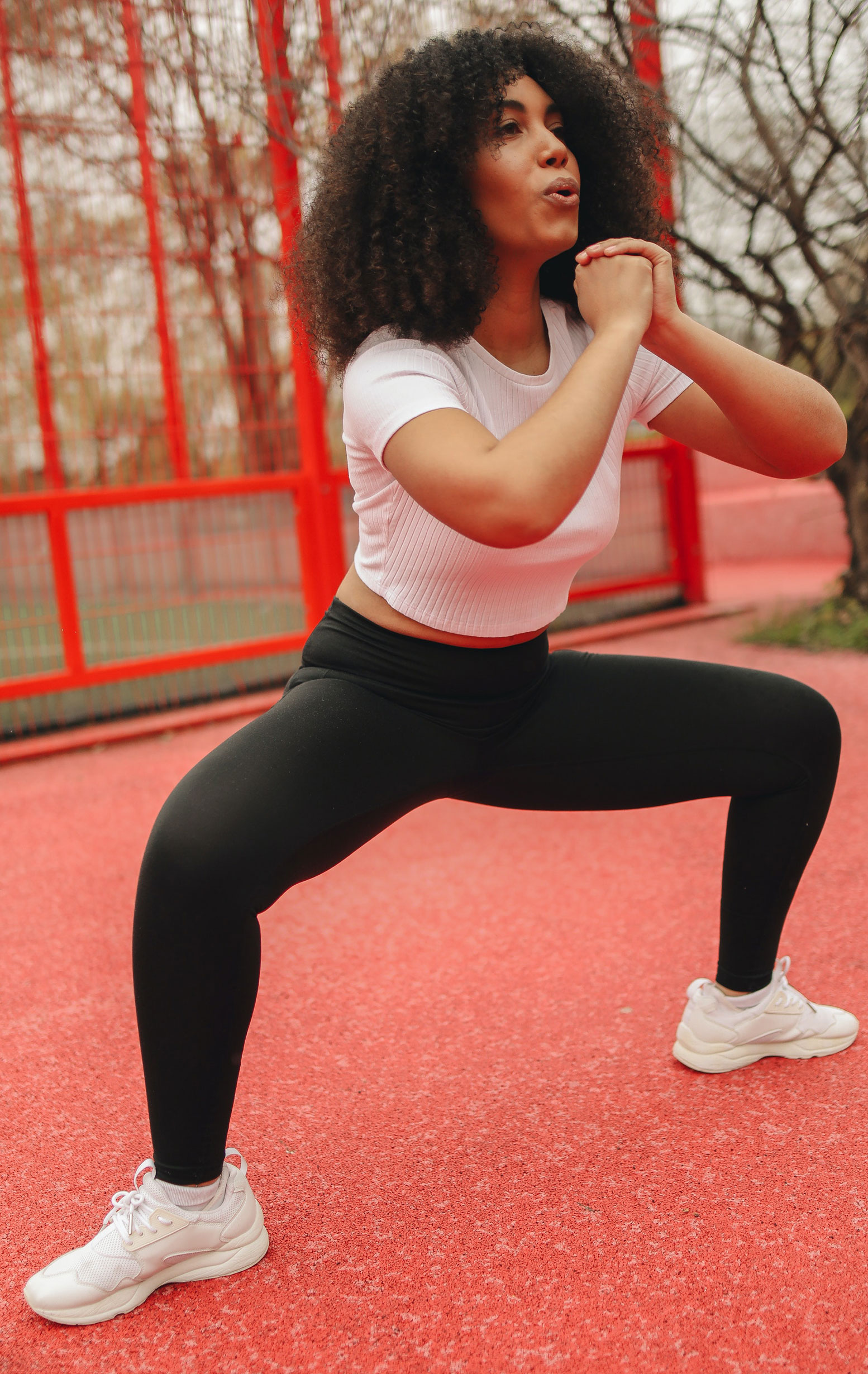E Exercise Techniques and Form
Exercise Modifications for Beginners: Building a Strong Foundation for Fitness
By
Beauty Doctor MD October 4, 2023

Starting a fitness journey as a beginner can be both exciting and daunting. It’s crucial to establish a strong foundation while gradually increasing the intensity and complexity of your workouts. One effective way to do this is by utilizing exercise modifications tailored to your fitness level. In this comprehensive guide, we will explore exercise modifications for beginners, their benefits, and how to incorporate them into your fitness routine. Whether your goal is to improve strength, endurance, flexibility, or overall fitness, these modifications will help you progress safely and steadily.
The Importance of Exercise Modifications for Beginners
Exercise modifications are adjustments made to traditional exercises to accommodate different fitness levels, physical abilities, or limitations. For beginners, these modifications serve several essential purposes:
- Reduced Risk of Injury: By starting with modified exercises that are appropriate for your current fitness level, you reduce the risk of overexertion and injury.
- Building Confidence: Exercise modifications allow beginners to perform movements successfully, boosting confidence and motivation to continue their fitness journey.
- Gradual Progression: Beginners can gradually increase the difficulty of exercises as their strength, flexibility, and endurance improve.
- Adaptation to Individual Needs: Modifications can be tailored to address specific limitations or health considerations, such as joint issues or previous injuries.
- Enhanced Skill Development: Starting with modified exercises provides an opportunity to focus on proper form and technique, which is essential for long-term success.
Exercise Modification Principles
Before we dive into specific modifications, it’s important to understand the principles behind exercise modifications for beginners:
- Simplify Movements: Begin with simpler versions of exercises to build a foundation of strength, stability, and coordination.
- Reduce Intensity: Lower the intensity of exercises by using lighter weights, less resistance, or shorter durations. This prevents excessive strain on muscles and joints.
- Focus on Form: Emphasize proper form and technique. Maintaining good form is more important than the number of repetitions or amount of weight lifted.
- Gradual Progression: As you become more comfortable with modified exercises, gradually increase the difficulty by adding weight, increasing resistance, or extending duration.
- Listen to Your Body: Pay attention to your body’s signals. If an exercise causes pain or discomfort beyond the usual muscle fatigue, stop and seek guidance.
Exercise Modifications for Different Fitness Components
Let’s explore exercise modifications for various fitness components, including strength, cardiovascular endurance, flexibility, and balance.
- Strength Training Modifications: Strength training builds muscle and enhances overall strength. For beginners, it’s important to start with manageable resistance and exercises that focus on proper technique.

- Modified Push-Up
- Standard Push-Up (Intermediate):
- Start in a plank position with hands shoulder-width apart.
- Lower your chest toward the ground by bending your elbows.
- Push back up to the starting position.
- Modified Push-Up (Beginner):
- Perform the push-up with your knees on the ground instead of your toes.
- This reduces the load on your upper body and allows you to build strength gradually.
- Dumbbell Squat:
- Standard Dumbbell Squat (Intermediate):
- Hold a dumbbell in each hand at shoulder height.
- Lower your body by bending your hips and knees.
- Keep your chest up and knees aligned with your toes.
- Return to a standing position.
- Modified Dumbbell Squat (Beginner):
- Perform the squat without weights.
- Focus on mastering the squat movement pattern before adding resistance.
- Cardiovascular Endurance Modifications: Cardiovascular exercises elevate your heart rate and improve endurance. For beginners, start with low-impact options and gradually increase intensity.
- Walking
- Standard Walking (Intermediate):
- Walk briskly, maintaining a steady pace.
- Modified Walking (Beginner):
- Start with a slower walking pace.
- As your fitness improves, gradually increase your walking speed.
- Cycling
- Standard Cycling (Intermediate):
- Ride a stationary or outdoor bike, adjusting resistance as needed.
- Maintain a consistent cycling pace.
- Modified Cycling (Beginner):
- Use a stationary bike with low resistance.
- Begin with shorter cycling sessions and gradually extend the duration.
- Flexibility and Mobility Modifications: Flexibility exercises improve joint range of motion and reduce the risk of injury. For beginners, focus on gentle stretches that target major muscle groups.
- Hamstring Stretch
- Standard Hamstring Stretch (Intermediate):
- Sit on the floor with one leg extended and the other bent so the sole of your foot touches the inner thigh.
- Reach toward your extended leg, keeping your back straight.
- Modified Hamstring Stretch (Beginner):
- Perform the stretch while sitting in a chair.
- Gradually work toward the seated floor stretch as flexibility improves.
- Hamstring Stretch
- Standard Hip Flexor Stretch (Intermediate)
- Kneel on one knee with the other foot in front, creating a 90-degree angle at the front knee.
- Shift your weight forward, feeling a stretch in the front of the hip of the back leg.
- Modified Hip Flexor Stretch (Beginner):
- Perform the stretch with support, such as holding onto a stable surface.
- Begin with a shallow stretch and increase depth as flexibility increases.
- Balance and Stability Modifications: Balance exercises improve stability and reduce the risk of falls. Beginners should start with simple balance exercises and gradually progress to more challenging ones.
- Single-Leg Balance
- Standard Single-Leg Balance (Intermediate):
- Stand on one leg while maintaining your balance.
- You can increase the difficulty by closing your eyes or standing on an unstable surface.
- Modified Single-Leg Balance (Beginner):
- Stand near a wall or sturdy surface for support.
- Start by lightly touching the support with your fingertips while balancing on one leg.
Incorporating Modifications into Your Routine
To effectively incorporate exercise modifications into your fitness routine, follow these steps:
- Assess Your Fitness Level: Begin with an honest assessment of your current fitness level. Consider your strengths, weaknesses, and any physical limitations or injuries.
- Set Realistic Goals: Establish achievable fitness goals that align with your current abilities. These goals will guide your exercise modifications.
- Choose Appropriate Exercises: Select exercises that match your fitness goals and can be modified to suit your level. For example, if your goal is strength, choose resistance exercises like squats and push-ups.
- Start with Basic Modifications: Begin with the most basic modifications, focusing on proper form and technique. As you become more comfortable, gradually progress to more challenging versions.
- Gradually Increase Intensity: Once you’ve mastered basic modifications, increase the intensity of your workouts by adding resistance, increasing duration, or incorporating more advanced exercises.
- Listen to Your Body: Always pay attention to how your body responds to exercise. If an exercise causes pain or discomfort, reassess your form or consider alternative modifications.
- Seek Guidance: If you’re unsure about exercise modifications or want personalized guidance, consider working with a certified personal trainer or physical therapist.
Conclusion
Exercise modifications for beginners are a valuable tool for establishing a strong fitness foundation and reducing the risk of injury. By following the principles of simplification, gradual progression, and proper form, you can build confidence, improve your fitness level, and work toward your fitness goals safely and effectively. Remember that everyone’s fitness journey is unique, and it’s essential to focus on your individual progress and well-being. With dedication and patience, you’ll gradually transition from modified exercises to more advanced workouts, achieving a higher level of fitness and overall health.

